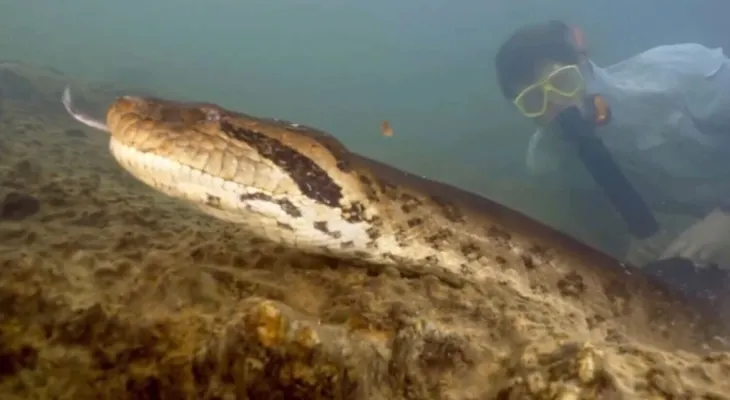Search here
Newspaper
Search here

Arab Canada News
News

Published: February 24, 2024
Scientists have discovered a new species of snake in the Amazon rainforest, rumored to be the largest in the world.
A team from the University of Queensland traveled to the Ecuadorian Amazon region to search for the previously undocumented northern green anaconda (Eunectes akayima), following an invitation from the Waorani people to observe the anaconda "rumored to be the largest in existence," according to scientists.
Professor Brian Fry, a biologist from the University of Queensland who led the team, said in a statement, "The team joined hunters on a 10-day exploratory trip to the Pamino area in the Payohiri Waorani territory, before paddling in the river system to find many anacondas lurking in the shallow waters to ambush prey."
Anacondas are giant constrictor snakes that are non-venomous and found in or near the water in the warm parts of South America.
Fry said about the team's discovery, which was made during the filming of the upcoming National Geographic series "Pole to Pole with Will": "The size of these amazing creatures was unbelievable, with the female anaconda we encountered measuring 6.3 meters (20.7 feet) long."
The team also said they heard unconfirmed evidence of snakes measuring 7.5 meters (24.6 feet) and 500 kilograms (1100 pounds) in the area.
The green anaconda is the heaviest snake in the world, according to the Natural History Museum in the UK, which noted that the heaviest individual ever recorded weighed 227 kilograms (500 pounds). It measures 8.43 meters (27.7 feet) in length and 1.11 meters (3.6 feet) in width.
While there is another species, the reticulated python, that tends to be longer—often exceeding 6.25 meters (20.5 feet)—it is lighter in weight.
But experts studying the creatures discovered that the newly identified northern green anaconda species diverged from the southern green anaconda nearly 10 million years ago, and they differ genetically by 5.5%.
Fry said: "This is very important—putting it into perspective, humans differ from chimpanzees by only about 2 percent." The findings were described in the journal MDPI Diversity.
The team then proceeded to compare the genetics of the green anaconda with other samples elsewhere to assess it as an indicator species for ecosystem health, warning that the Amazon is facing many threats.
Fry confirmed: "Deforestation of the Amazon Basin due to agricultural expansion has resulted in the loss of an estimated 20 to 31 percent of habitats, which could affect up to 40 percent of its forests by 2050."
He added that habitat degradation, wildfires, drought, and climate change threaten rare species such as the anaconda that live in such rare ecosystems.
Comments